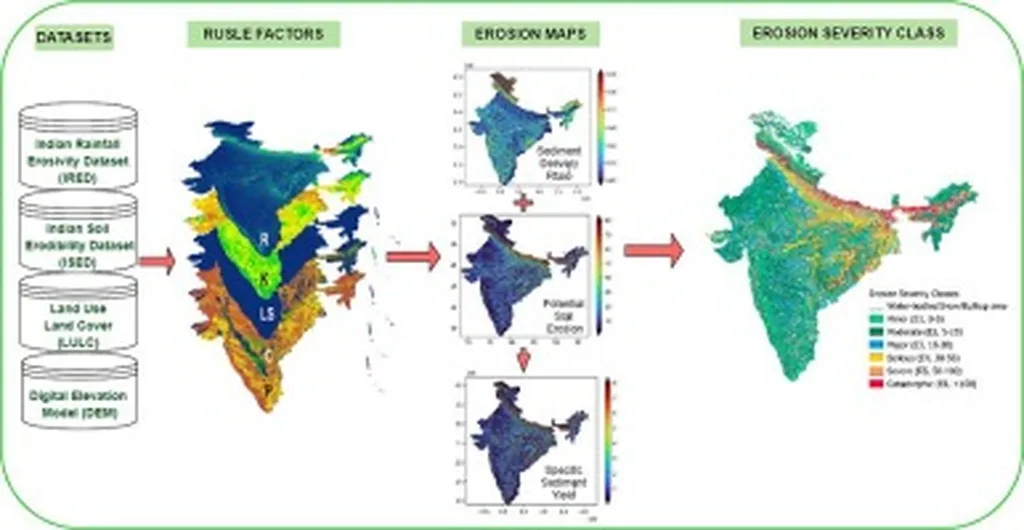In the lush, tropical landscapes of India’s Mandovi River watershed, a critical battle against soil erosion is underway, and a recent study led by Roshna Gawas from Goa University’s Cluster Research Centre in Geography is shedding new light on the fight. The research, published in the Journal of Degraded and Mining Lands Management (translated as “Journal of Degraded and Mining Lands Management”), employs advanced geospatial techniques to map soil erosion vulnerability, offering valuable insights for sustainable land and water management, particularly in the energy sector.
The Mandovi Basin, spanning 2,047 square kilometers, faces significant soil erosion challenges. Gawas and her team utilized the Revised Universal Soil Loss Equation (RUSLE) model to estimate potential soil loss, integrating key factors such as rainfall erosivity, soil erodibility, topography, cover management, and conservation practices. By leveraging satellite-based datasets and Geographic Information System (GIS) techniques, the researchers created a comprehensive soil erosion map of the watershed.
“The findings reveal a complex picture of soil loss in the Mandovi watershed,” Gawas explains. “While approximately 52.42% of the area is at very low risk of erosion, around 5.28% is exposed to very high risk. This variability underscores the need for targeted soil conservation measures.”
The study’s results indicate that soil loss in the Mandovi watershed ranges from 0 to over 50 tons per hectare per year, with a mean value of 14.2 tons per hectare per year. The high erosion rates are attributed to factors such as barren land, steep terrain, high rainfall erosivity, and inadequate soil conservation practices.
For the energy sector, particularly hydropower and other water-intensive industries, understanding soil erosion patterns is crucial. Erosion can lead to sedimentation in rivers and reservoirs, reducing water storage capacity and impacting energy production. “By identifying areas at high risk of erosion, we can support the energy sector in implementing targeted conservation strategies,” Gawas notes. “This proactive approach can help mitigate the long-term impacts of soil erosion on water resources and energy infrastructure.”
The research not only highlights the current state of soil erosion in the Mandovi watershed but also paves the way for future developments in sustainable land management. By integrating advanced geospatial techniques and models like RUSLE, stakeholders can make informed decisions to protect valuable land and water resources.
As the energy sector continues to evolve, the insights from this study will be instrumental in shaping policies and practices that promote sustainable resource management. “Our goal is to provide a foundation for informed decision-making,” Gawas concludes. “By understanding the dynamics of soil erosion, we can work towards a more sustainable future for the Mandovi watershed and beyond.”
This research, published in the Journal of Degraded and Mining Lands Management, offers a compelling example of how scientific advancements can drive meaningful change in land and water management, ultimately benefiting industries and communities alike.

